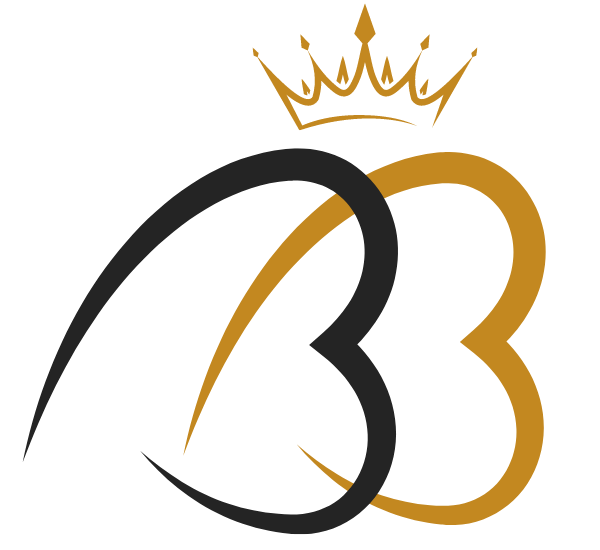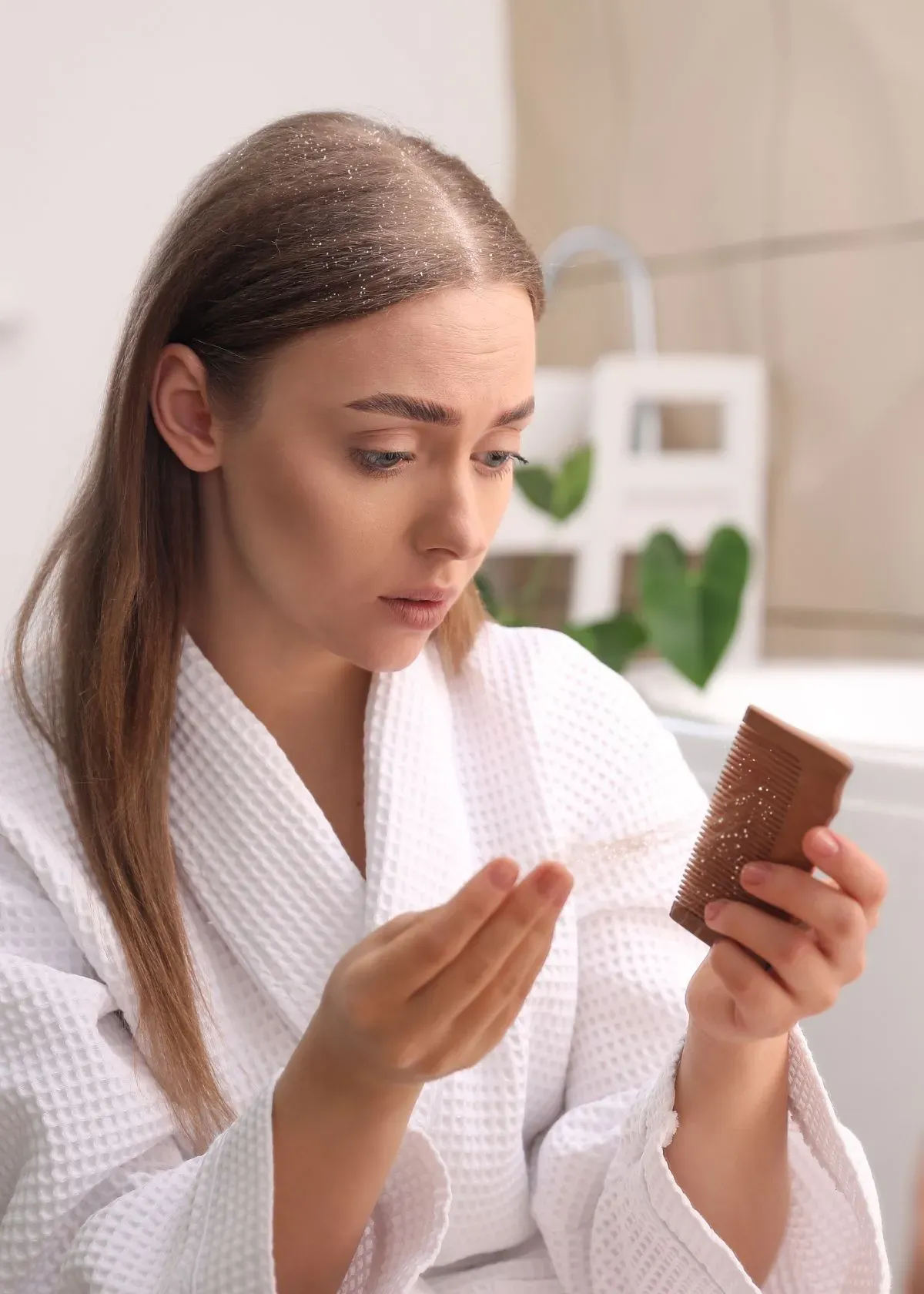If you're nodding along, recognizing the all-too-familiar snowfall on your shoulders, take comfort in knowing that dandruff is a widespread scalp woe. Many of us are left scratching our heads – both metaphorically and literally – as we navigate through an avalanche of advice in search of relief.
The quest for answers can be just as flustering as the flakes themselves. So, how does dandruff shampoo work?
My deep dive into dandruff's little white nuisances has revealed insights and tactics that tackle them head-on. In this blog post, we'll delve into how specialized shampoos don't merely cleanse; they pack a punch with potent ingredients designed to banish not only dirt but also those uninvited fungal guests dwelling atop our heads.
As you continue reading, I'll shed light on what gives these shampoos their formidable edge over stubborn dandruff.
So, gear up for some revelations that promise to make your journey towards flake-free days a whole lot clearer.
- Dandruff shampoos work by targeting the root cause of dandruff through active ingredients such as Zinc Pyrithione, Selenium Sulfide, Salicylic Acid, and Ketoconazole.
- These active ingredients control the overgrowth of Malassezia globosa, a fungus that contributes to dandruff, while also reducing the buildup of oil and skin cells on the scalp.
- Massaging the shampoo into the scalp helps distribute active ingredients evenly and nourishes hair follicles; letting it sit for a few minutes enhances its effectiveness. Thorough rinsing removes any residue from building up on the scalp.
Understanding Dandruff
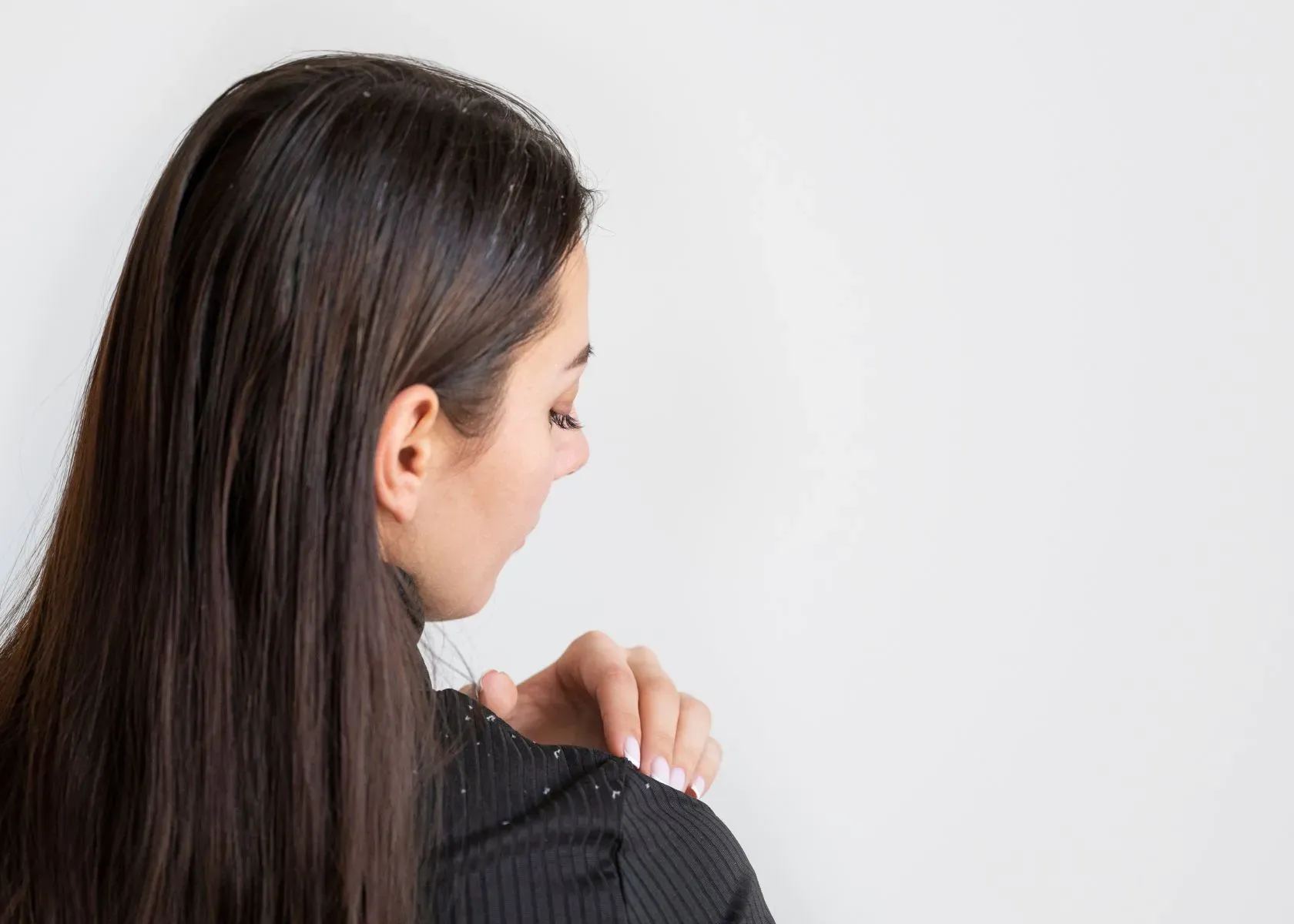
Dandruff is a common scalp condition caused by the overgrowth of a fungus called Malassezia globosa. It can lead to flaky, itchy skin and sometimes even redness or irritation.
What Causes Dandruff?
My scalp sometimes feels itchy and flaky, and I’ve learned that this is often due to a tiny fungus called Malassezia globosa. This little organism lives on everyone’s head, feeding on the natural oils our hair follicles produce.
The trouble starts when it grows too much, causing irritation that leads to dandruff.
The excess growth of this yeast triggers more skin cells to grow and then shed faster than usual. As these cells combine with the oils on my scalp, they form clumps we see as white flakes in our hair or on our shoulders.
Other factors can contribute too - things like stress, cold weather, or not shampooing enough can all make dandruff worse.
This pesky condition also has a thing for oily scalps because the extra oil gives Malassezia globosa more food to thrive on. That's why keeping my scalp clean with medicated shampoo helps keep those irritants at bay and manage any fungal acne issues along with reducing potential hair loss from severe cases of dermatitis such as seborrheic dermatitis.
It's about finding balance; if my scalp microbiome gets out of whack, that's when I notice dandruff making an unwanted appearance.
Common Symptoms
Dandruff often presents itself as white, oily flakes of dead skin in the hair and on the shoulders. It can also lead to an itchy scalp, which may become irritated and inflamed. Additionally, some individuals with dandruff experience a tingling sensation on their scalp or notice excessive dryness.
These symptoms can be quite uncomfortable and embarrassing, prompting many people to seek relief through various treatment options, such as anti-dandruff shampoos.
In addition to flaking and itching, dandruff can cause redness and tenderness on the scalp due to inflammation. Some people may also notice that their hair feels greasier than usual or becomes more difficult to manage.
Anti-Dandruff Shampoo Ingredients and Their Functions
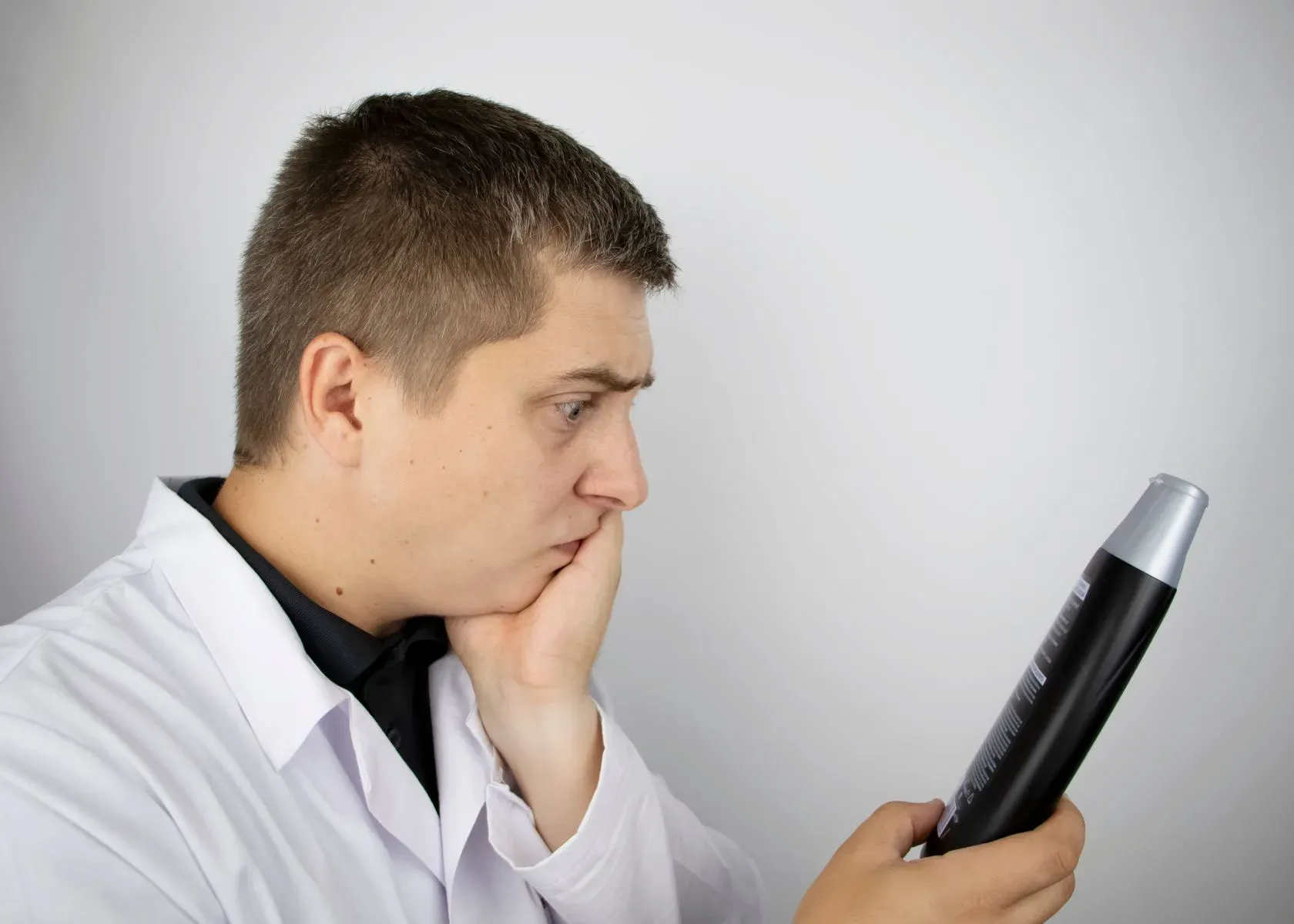
ZPT (Zinc Pyrithione) helps control the fungus responsible for dandruff, while Selenium Sulfide reduces yeast on the scalp, and Salicylic Acid helps reduce the buildup of oil and skin cells. Here is how each ingredient of anti dandruff shampoo work:
ZPT (Zinc Pyrithione)
Zinc Pyrithione, also known as ZPT, is a key active ingredient in many anti-dandruff shampoos. Its antifungal properties work to control the overgrowth of Malassezia globosa on the scalp, targeting one of the root causes of dandruff.
By reducing fungus and yeast levels on the scalp, ZPT helps prevent dandruff formation while cleansing the scalp. This ingredient effectively balances the scalp's microbiome and inhibits microbial causes of dandruff, promoting a healthier environment for hair growth and reducing dandruff occurrence.
In addition to its antifungal properties, ZPT also acts as a scalp irritant reducer, soothing any irritation or inflammation caused by dandruff-forming microbes. With its ability to nourish the scalp and combat microbial causes of dandruff, Zinc Pyrithione plays a pivotal role in maintaining healthy and flake-free hair.
Selenium Sulfide
Selenium sulfide is an active ingredient found in many anti-dandruff shampoos. It is a topical antifungal medication that effectively reduces levels of the yeast responsible for causing dandruff.
Due to its antifungal properties, selenium sulfide directly targets and controls the overgrowth of Malassezia globosa on the scalp, which is often the root cause of dandruff. By inhibiting the growth of this yeast, selenium sulfide helps to prevent and reduce dandruff formation, providing relief from scalp irritation and flaking.
The use of selenium sulfide in anti-dandruff shampoo helps to balance the scalp's microbiome by controlling fungal overgrowth, preventing an excess buildup of dandruff-causing microbes.
Salicylic Acid
Salicylic acid is a key ingredient in anti-dandruff shampoos due to its ability to exfoliate the scalp. This beta hydroxy acid helps remove dead skin cells and reduce flakiness, which are common symptoms of dandruff.
By penetrating the skin and breaking down the bonds between cells, salicylic acid effectively promotes the shedding of the top layer of skin on the scalp, preventing it from accumulating and forming dandruff.
The use of salicylic acid in anti-dandruff shampoos also helps to control oil production on the scalp. Its exfoliating properties work to unclog hair follicles and pores by removing excess oil and debris, preventing them from becoming irritated or inflamed.
Ketoconazole
Ketoconazole is an effective antifungal ingredient found in many anti-dandruff shampoos. It works by targeting the fungus Malassezia globosa, which can contribute to dandruff. Ketoconazole helps to reduce the overgrowth of this fungus on the scalp, thereby decreasing dandruff formation.
Additionally, ketoconazole has been shown to have anti-inflammatory properties, which can help soothe scalp irritations often associated with dandruff.
When used regularly as part of a dandruff shampoo regimen, ketoconazole can effectively help manage and prevent dandruff by controlling yeast levels and reducing scalp inflammation.
How Do These Ingredients Work?
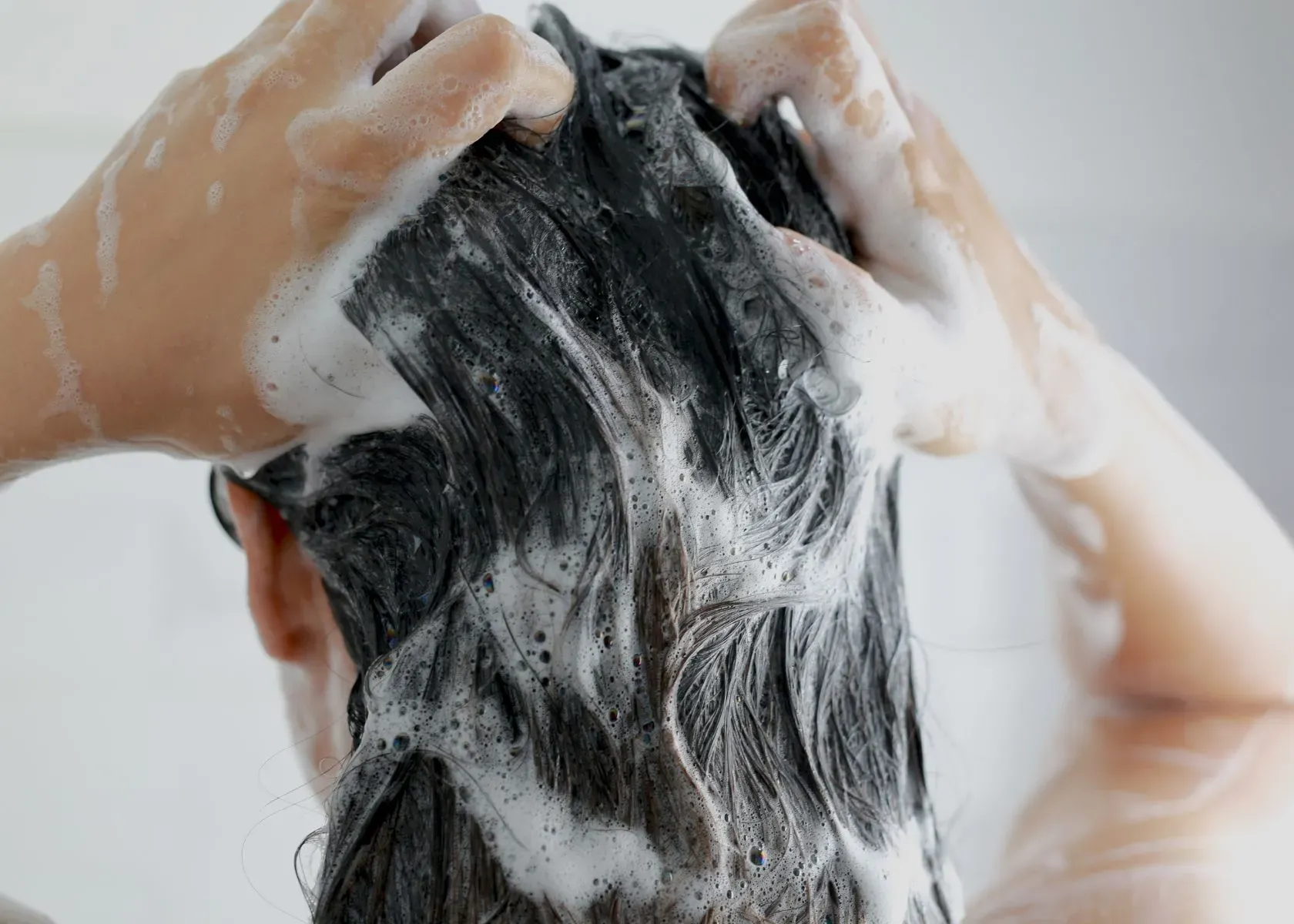
ZPT, selenium sulfide, salicylic acid, and ketoconazole work by controlling the fungus that causes dandruff and reducing the buildup of oil and skin cells. To learn more about how these ingredients work to combat dandruff, keep reading. Here is how anti dandruff shampoos work:
Controlling Malassezia globosa
Dandruff shampoo containing active ingredients such as ketoconazole and selenium sulfide effectively targets and controls the overgrowth of Malassezia globosa, a fungus that contributes to dandruff.
These anti-fungal properties help reduce the presence of this scalp irritant, thereby decreasing the occurrence of dandruff.
The active ingredient in most dandruff shampoos helps to rebalance the scalp's microbiome, preventing an overgrowth of Malassezia globosa. This targeted approach addresses the root cause of dandruff by controlling the fungus that causes irritation and flaking.
Reducing Buildup of Oil and Skin Cells
To reduce the buildup of oil and skin cells, anti-dandruff shampoos often contain ingredients such as salicylic acid and ketoconazole. Salicylic acid works by breaking down and exfoliating dead skin cells on the scalp, preventing them from clumping together and forming flakes.
This helps to reduce flakiness and itchiness associated with dandruff. Ketoconazole, an antifungal ingredient, targets the overgrowth of Malassezia globosa on the scalp, which is a common cause of dandruff.
By controlling this fungus it helps to prevent excessive oil production and reduces the likelihood of skin cell buildup that leads to dandruff.
Using these active ingredients actively contributes to maintaining a healthy balance of oils on the scalp while reducing the accumulation of dead skin cells — essential factors for minimizing dandruff formation.
Tips for Using Anti-Dandruff Shampoo
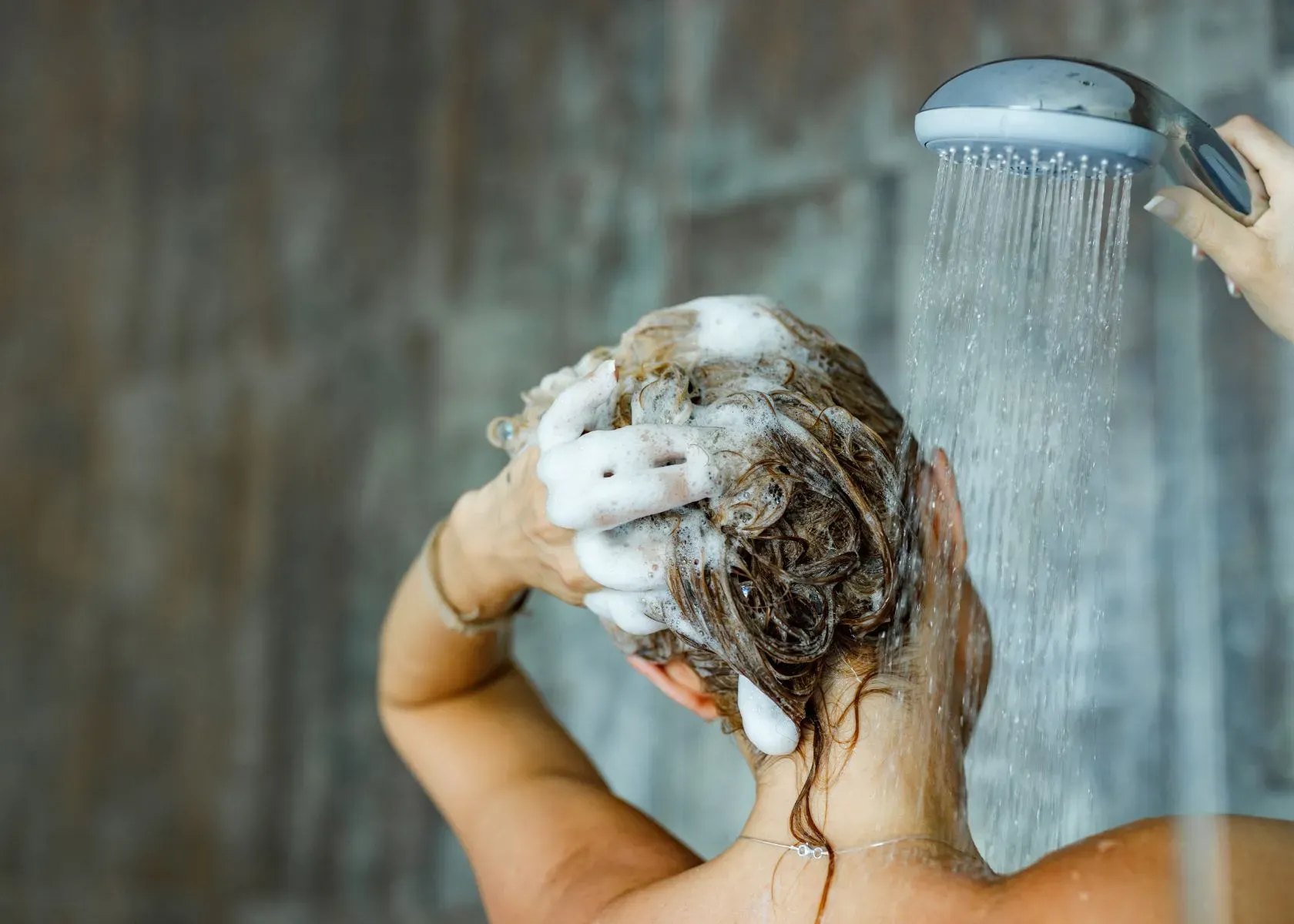
Massage the shampoo into your scalp, let it sit for a few minutes, and rinse thoroughly for best results. To learn more about managing dandruff effectively, keep reading.
Massage Into Scalp
Gently massaging the anti-dandruff shampoo into the scalp helps to improve blood circulation and nourish the hair follicles. This action aids in distributing the active ingredients of the shampoo evenly across the scalp, ensuring that they can effectively target and control dandruff-causing microbes.
By massaging the shampoo, I stimulate my scalp while allowing it to benefit from both cleansing and nourishing properties, ultimately promoting a healthier environment for my hair.
By massaging the anti-dandruff shampoo into my scalp, I aid in its effectiveness by ensuring that it reaches all areas where dandruff-causing fungi may be present. This simple step not only improves product distribution but also enhances overall scalp health by stimulating blood flow and promoting nutrient absorption—essential for maintaining a healthy scalp free from dandruff-related issues.
Let It Sit for A Few Minutes
Allow the anti-dandruff shampoo to sit for a few minutes on your scalp. This gives the active ingredients enough time to work their magic. During this period, they can effectively penetrate the skin and target the root cause of dandruff by controlling fungus and reducing yeast levels.
Allowing it to sit also enhances its nourishing properties, ensuring that your scalp receives maximum benefit from the treatment.
As you let it sit, you're giving yourself a brief moment of relaxation as well. Massaging it into your scalp during this time stimulates blood flow and helps in maintaining a healthy environment for hair growth.
Rinse Thoroughly
Rinse thoroughly with lukewarm water to remove all traces of the anti-dandruff shampoo. This prevents any residue from building up on the scalp, ensuring that the active ingredients effectively target dandruff-causing microbes without causing irritation or dryness.
Thorough rinsing also helps to maintain a healthy balance of oils and nutrients on the scalp, promoting overall hair and scalp health.
After applying the dandruff shampoo, ensure a thorough rinse to eliminate any remaining product from your hair and prevent potential residue build-up. Rinsing thoroughly will help to keep your scalp clean and free from potential irritants or blockages that could exacerbate dandruff symptoms.
Other Ways to Manage Dandruff
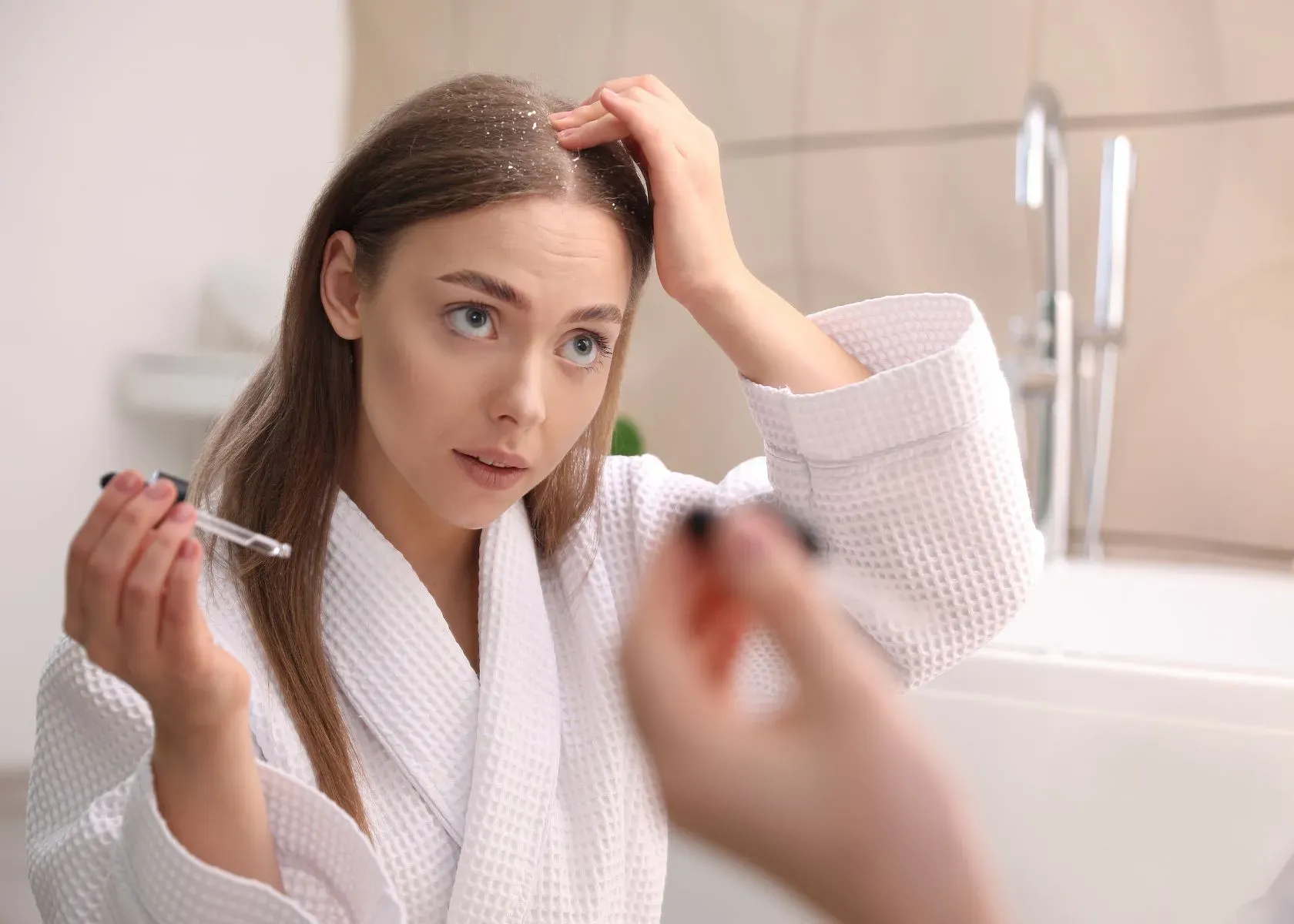
I will also discuss lifestyle and home remedies, alternative treatments, and when to see a doctor.
Lifestyle and Home Remedies
I find that incorporating certain practices into my daily routine helps manage dandruff effectively. Here's how:
- Regular hair washing: Washing my hair with a mild shampoo and warm water helps to remove excess oils and flakes, reducing the risk of dandruff. Applying anti dandruff shampoo on the entire scalp.
- Scalp care routine: Gently massaging the scalp during shampooing can help improve blood circulation, which nourishes the scalp while cleansing it.
- Diet and hydration: Maintaining a balanced diet rich in vitamins, minerals, and hydration supports overall scalp health, potentially reducing dandruff occurrence.
- Stress management: Managing stress levels through activities like yoga, meditation, or exercise can support a healthy scalp environment.
- Proper hair care products: Using hair care products that are suitable for my specific hair type and scalp condition can help to maintain a healthy scalp environment, reducing the likelihood of dandruff formation.
Alternative Treatments
When dealing with dandruff, there are alternative treatments that can complement the use of anti-dandruff shampoo. These can include:
- Tea tree oil: This essential oil has natural anti-fungal and antibacterial properties, making it an effective treatment for dandruff.
- Apple cider vinegar: Its acidic nature helps to maintain the pH balance of the scalp, reducing the growth of dandruff-causing fungi.
- Aloe vera gel: Known for its soothing properties, aloe vera can help alleviate itching and flaking associated with dandruff.
- Omega-3 fatty acids: Consuming foods rich in omega-3s or taking supplements may help reduce inflammation and improve overall scalp health.
- Probiotics: Incorporating probiotic-rich foods or supplements into your diet may help restore balance to the scalp's microbiome, reducing dandruff occurrence.
- Biotin supplements: Biotin, a B vitamin, aids in maintaining healthy skin and hair, potentially reducing dandruff symptoms.
- Stress management techniques: As stress can exacerbate dandruff, practicing relaxation techniques such as yoga or meditation may help manage symptoms.
- Adjusting hair care routine: Using gentle shampoos and avoiding products with harsh chemicals can assist in minimizing irritation and flakiness on the scalp.
- Antifungal creams or lotions: For severe cases, over-the-counter antifungal treatments like ketoconazole cream may be recommended by a healthcare professional. You can also try a medicated dandruff shampoo.
- Dietary adjustments: Some individuals find relief from dandruff by reducing their intake of sugar and processed foods, which can contribute to inflammation and yeast overgrowth on the scalp.
When to See a Doctor?
If you notice that over-the-counter dandruff shampoos are not effectively managing your symptoms after several weeks of consistent use, it may be time to consult a dermatologist or healthcare provider.
Persistent and severe dandruff could be indicative of an underlying condition such as seborrheic dermatitis or scalp psoriasis, which may require prescription-strength treatments for effective management.
Additionally, if you experience excessive itching, redness, inflammation, or sores on the scalp despite using anti-dandruff shampoo regularly, seeking medical advice is crucial to rule out any potential complications.
Furthermore, if your dandruff is accompanied by hair loss that appears to be significant or sudden changes in the texture or appearance of your hair and scalp, consulting a doctor is important for proper evaluation and guidance.
Frequently Asked Questions
After extensive research and trials of various formulations, I'm sharing the most common questions I had about the active ingredients and methods these medicated cleansers use to treat dandruff, along with the answers I found. Read on for the facts about how dandruff shampoos get to the root of the problem.
What does dandruff shampoo do to get rid of flakes?
Dandruff shampoo works by using special ingredients to control fungus on the scalp, reduce yeast, and soothe scalp irritants that cause flakes.
Can dandruff shampoo help with a fungal acne problem on my scalp?
Yes, many antidandruff shampoos contain fungus-fighting elements that can also be effective in treating fungal acne on the scalp.
How should I use dandruff shampoo for the best results?
For best results, massage the antidandruff shampoo into your hair and scalp thoroughly and leave it in for a few minutes to let it work against those irksome irritants.
What are some key ingredients I should look for in an antidandruff shampoo?
Look for active ingredients like zinc pyrithione or selenium sulfide which are known to be powerful in reducing yeast and controlling fungus associated with dandruff.
Conclusion
Dandruff shampoo works by targeting the root cause of dandruff through its active ingredients and their anti-fungal properties. By massaging it into the scalp, increasing blood flow, and using practical tips like letting it sit for a few minutes before rinsing thoroughly, one can efficiently manage dandruff.
The importance of using dandruff shampoo lies in its ability to nourish the scalp while preventing and reducing the occurrence of dandruff. This simple yet effective approach can lead to significant improvements in scalp health.
For further guidance on managing dandruff with shampoos or other remedies, consider consulting a dermatologist. I get it; treating dandruff is not easy, so share with all of us how you treat this condition in the comments below.
References
- Ro, B. I., & Dawson, T. L. (2005). The role of sebaceous gland activity and scalp microfloral metabolism in the etiology of seborrheic dermatitis and dandruff. Journal of Investigative Dermatology Symposium Proceedings, 10(3), 194–197. https://pubmed.ncbi.nlm.nih.gov/16382662/
- Schwartz, J. R., Bacon, R. A., Shah, R., Mizoguchi, H., & Tosti, A. (2013). Therapeutic efficacy of anti-dandruff shampoos: A randomized clinical trial comparing products containing zinc pyrithione or selenium sulfide. International Journal of Cosmetic Science, 35(4), 400-406. https://pubmed.ncbi.nlm.nih.gov/23614401/
- Piérard-Franchimont, C., Piérard, G. E., Arrese, J. E., & De Doncker, P. (2002). Effect of ketoconazole 1% and 2% shampoos on severe dandruff and seborrhoeic dermatitis: clinical, squamometric and mycological assessments. Dermatology, 204(1), 88-92. https://pubmed.ncbi.nlm.nih.gov/11306850/
Read More About Anti-Dandruff Shampoos

